Release Notes 0.42
The new version WOCU 0.42 is loaded with many new features and improvements in response to requests and suggestions from our users.
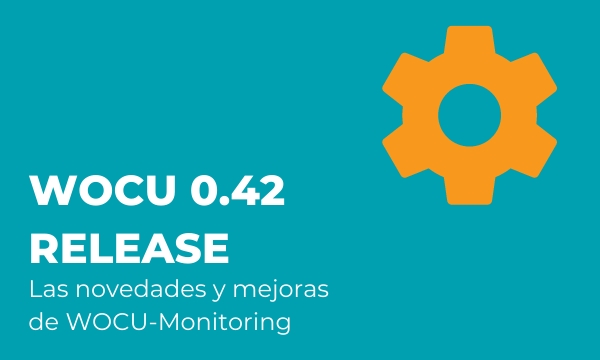
One of the priorities of this version has been to continue to streamline alert management, facilitate error debugging and help make recovery of the monitored infrastructure as immediate as possible. Among many other issues, the information offered in the Business Process debug view, BP Trace, has been extended, registering in the table the chain of problematic assets that may be affecting the availability of the Business Process
As an enhancement to the full event display, multi-level support has been added to the log of each log, creating a more structured and hierarchical view.
The powerful UI-ACL module (which allows per-user display permissions to be set in the interface via ACLS rules) has been extended to support the configuration of Dashboards, thus allowing free management and assignment of user permissions and policies in the dashboard definition module.
The scope of the CSV_Import task has also been extended, now supporting the import of Host Business Processes and Service Business Processes via CSV file.
We have added the possibility of scheduling different valid incident notification periods, based on the needs of the operator, thus minimising the noise caused by unnecessary or assumed notifications. The scheduling process is described in a new use case included in the User Manual.
But there is more, here are some of the most important new features of this new 0.42 version of WOCU Monitoring
1. Functional and operational improvements in the Business Processes debugging modalities.
The BP Trace, available in the Host and Services shows a tree traced from Business Rules (BP Rules), where besides knowing in detail the state of the parts of the process, it is possible to locate the root cause of an anomalous monitoring state
Having knowledge of the (possible) failure speeds up the process of prevention, treatment and resolution of incidents in monitored infrastructures. Therefore, in this new version, work has been done on several points of this module, with the aim of improving and increasing its functions and making them much more useful.
New information on the causes of failure of a Business Process.
Although the same operation is maintained, the Failure Causes table has been edited, where previously only the nodes that were causing the Business Process to reach an undesired functional state were listed. Now, this table is renamed Problematic Assets, since, unlike previous versions, all the assets that present a problem or failure are shown, whether or not they are the cause of the total failure of the tree.
But that’s not all, two new columns have been added:
- Failure Causes column: where the assets causing the tree to fall will be specified (assigning the value = YES). This allows to know the totality of unavailable elements, and in addition, those that are affecting the stability of the painted Business Process.
- Info column: which contains a small button that will be enabled only in the entries of Hosts with associated Services (and represented). By clicking on it, a new explanatory entry will be displayed, detailing the reason or reason for the problem affecting the service and therefore, the possible cause of the fall or instability of the tree.
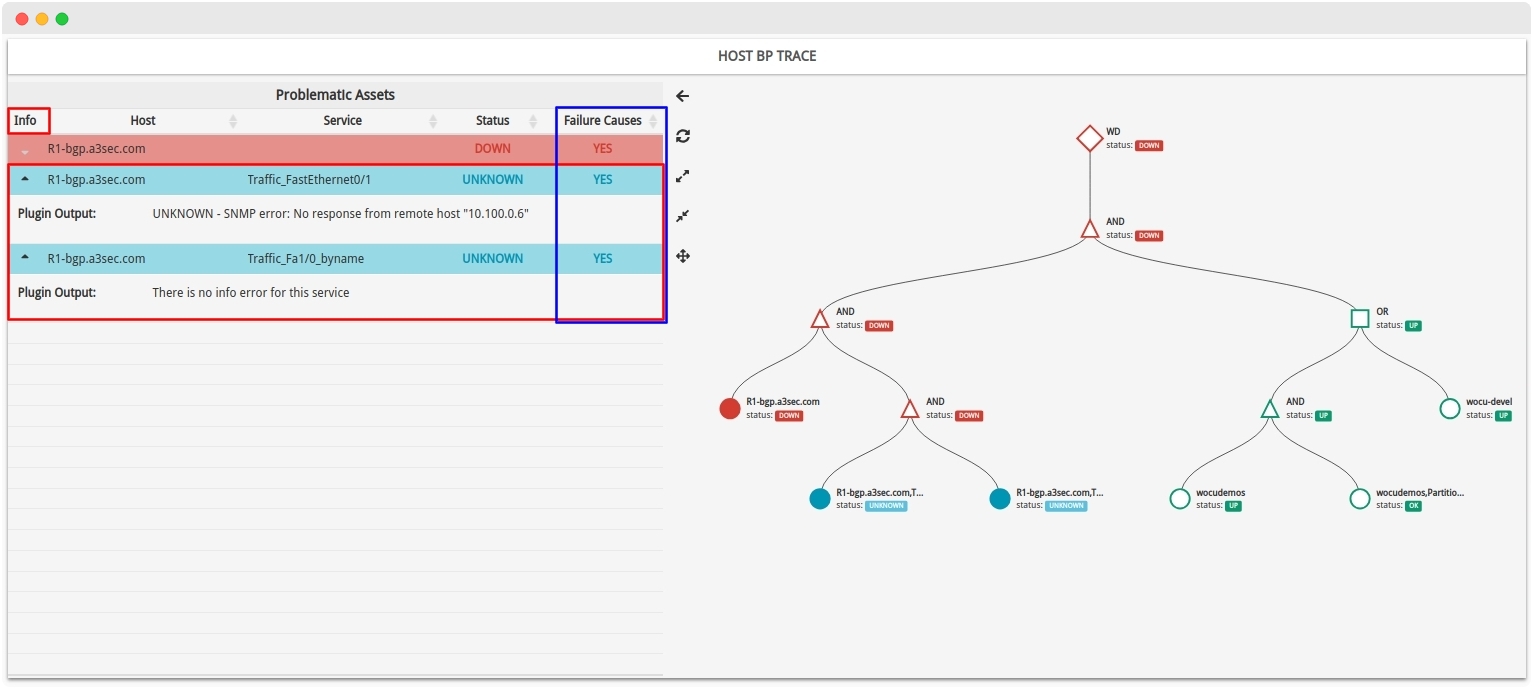
Important
As a special feature, please note that for duplicate problem nodes that are in the same situation, only a single entry will be recorded in the table. Remember that WOCU is able to process and paint trees composed of several nested Business Processes (BP).
Simplified view of data
Another improvement is the removal of the Host name that came with the name of the associated Service, from the Services column. Sometimes it used to be very long and made it difficult to read. As a result, the entry is visually cleaner.

Direct access to the BP Trace section from the Business Process Inventory
Being aware of the importance of the BP Trace in Business Processes (understood as logical asset), its accessibility has been modified, and now clicking on the name of a Business Process in the Business Processes Inventory will redirect the user directly to the BP Trace section of your modal, rather than to the Status section of your modal, as is the case for the other modals
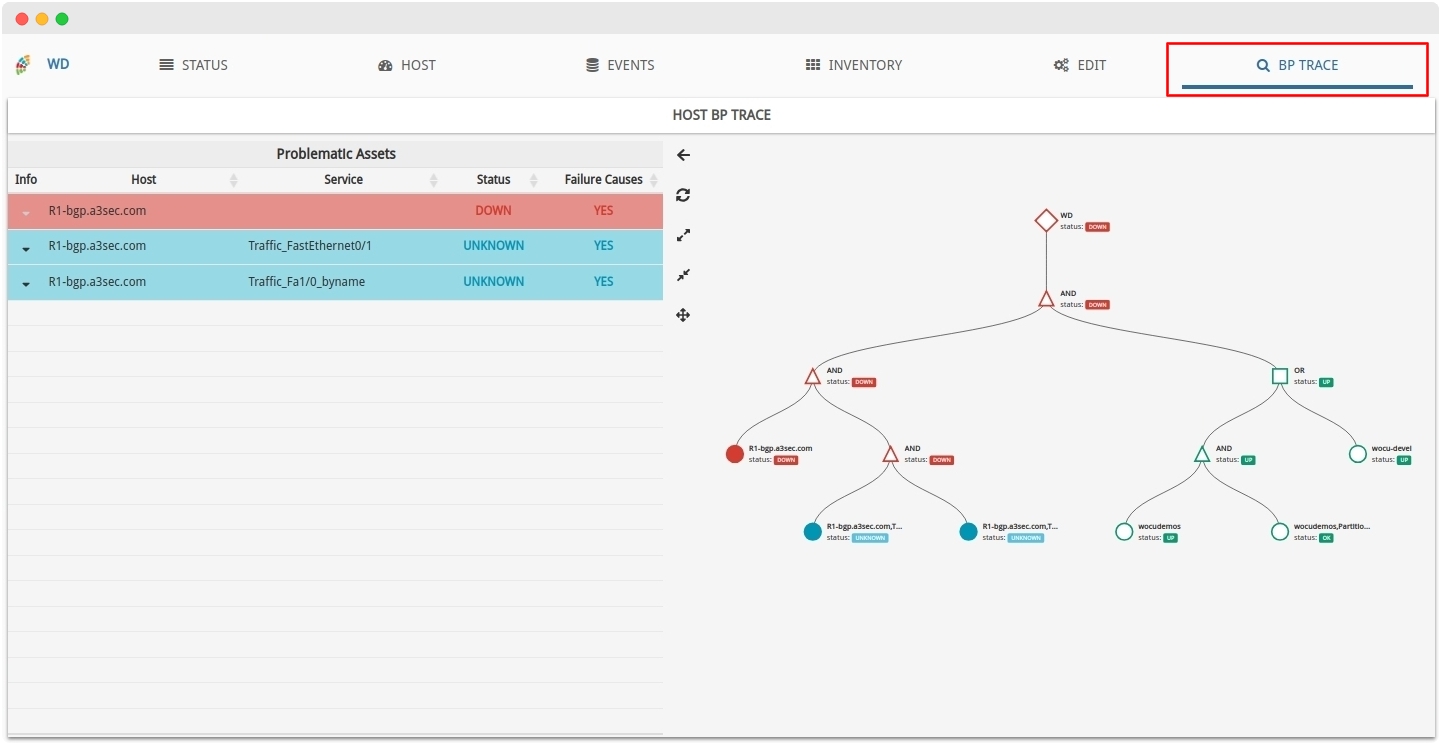
Attention
This change does not affect the rest of the modals, whose default tab remains Status.
Note
More information can be found at: BP Trace.
2. Multi-level support for event visualisation
WOCU has a log viewer to manage syslog events, monitoring traps, application logs, etc.
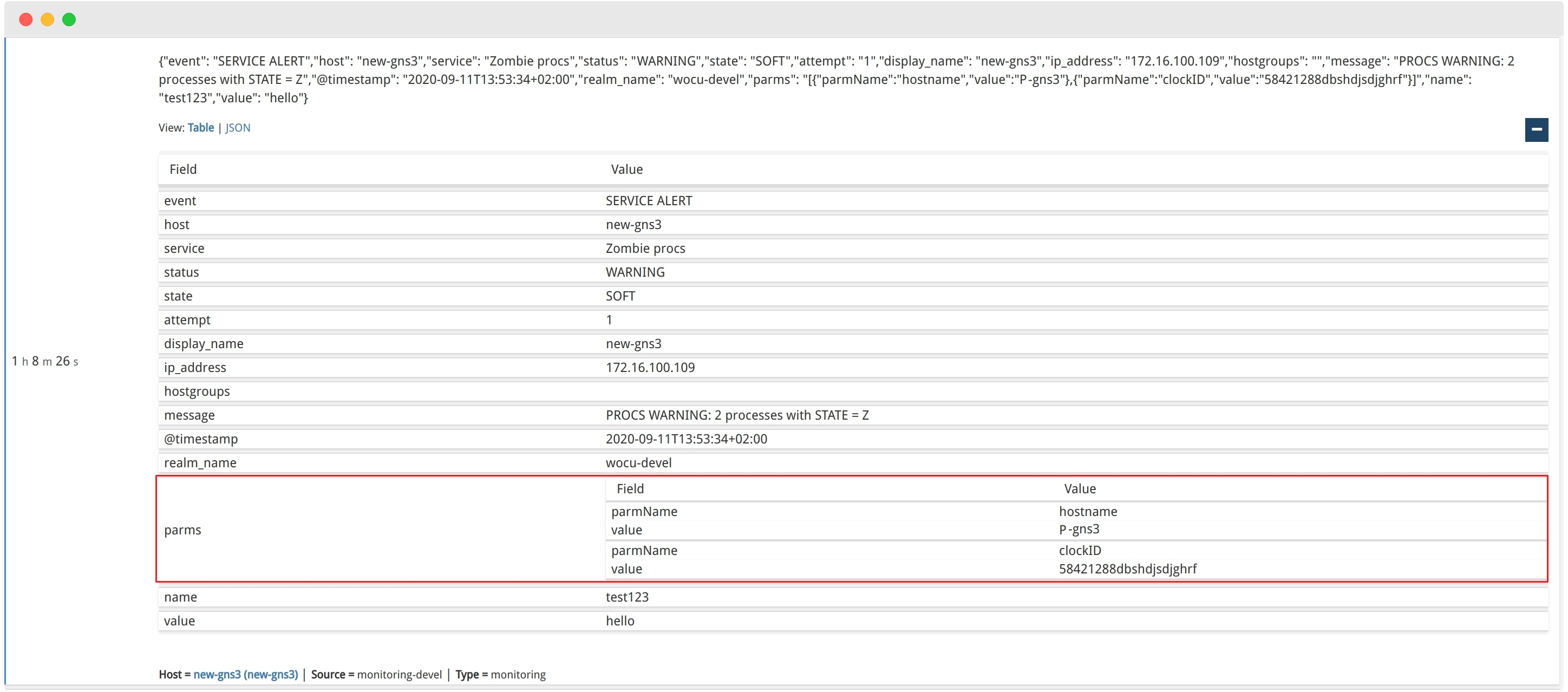
In this new version, support for multiple levels in the event structure has been added, showing nested tables where necessary.
3. New UI-ACL support in the Dashboards configuration.
By way of introduction, UI-ACL (Access Control List) is an extra APP useful for limiting the scope of user viewing, i.e. it allows to enable or deny access to specific environments or interfaces (either by sections, modules, widgets, etc.).
WOCU already manages permissions and access privileges through ACLs, however, in this latest version support for ACLs has been incorporated, specifically in the functionality Filtering by domain or URL in the configuration of External Dashboards included in the previous version. Thus allowing the client to configure (enable or disable) accesses freely depending on the type of user
In addition, the Dashboards section has been refined, structuring the view for a clearer and more homogeneous visualisation.
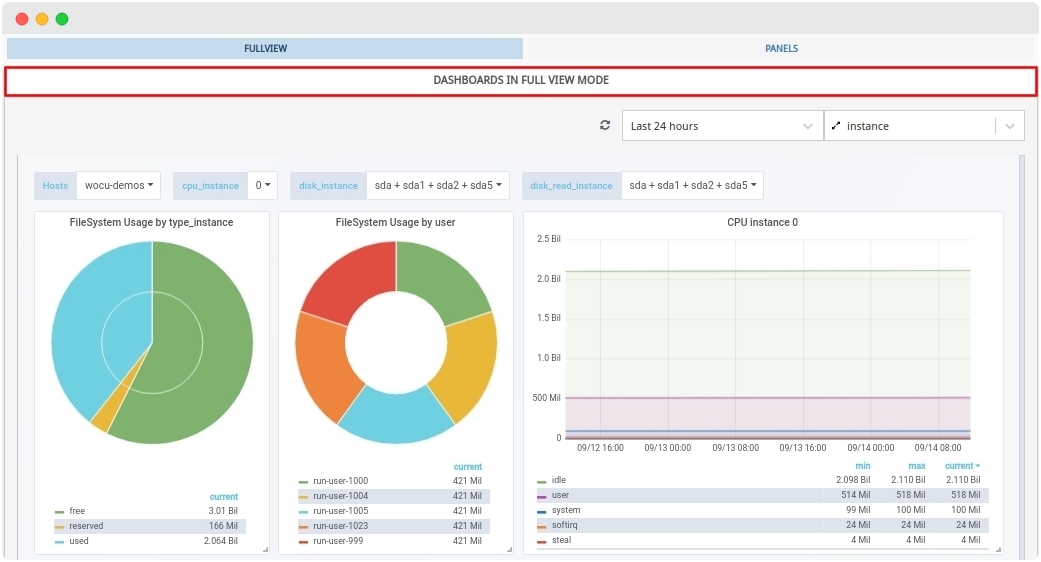
4. Ability to import Business Processes from Hosts and Services via CSV
The CSV_Import task allows the discovery and addition of new Assets to the WOCU database by reading a CSV file.
In this latest version, work has been done on the scope of this task, in particular, the types of Assets supported have been extended, with the discovery of Host Business Processes and Service Business Processes now possible, in addition to the already supported Hosts and Contacts.
The type of Asset to be imported is automatically ascertained by the system, based on the fields entered in the defined CSV format.

Attention
The management of Hosts Business Processes and Services newly discovered by this task, i.e. Pending Assets, will be done from the module Advanced Configuration of the Import-Tool, specifically in the Synchronizer section. Where the Administrator can individually apply a set of specific actions (deleting pending assets, moving to monitoring or Blacklist, displaying differences between Asset versions, etc.).
5. Scheduling of Notification Periods and Checks
Knowing the status of the monitored infrastructure is the first step in resolving or preventing possible incidents. WOCU has a configurable notification system that notifies the operator of the results of operational checks carried out or incidents that have occurred, in order to act as soon as possible and thus minimise their impact or occurrence.
In this new version, work has been done on this line, specifically on the ability to define different time periods for notifications through the Time_periods attribute, as part of the configuration of Hosts and Contacts. These periods are considered valid times for sending notifications and running checks. Their operation is very simple, once the week is over they start a new rotation.
For Hosts it is possible to define a certain time period for notifications (with the attribute
Notification_period) and another one for operability checks (with the attributeCheck_period). In this way, only checks will be performed and notifications will only be generated within the set timeframe. For example: the availability check period (Check_period) is 24x7 and the results are notified (Notification_period) to the operator within the working hours (08:00 h. - 17:00 h.).
For Contacts it is possible to define two time periods to configure the time slots during which the operator will receive notifications generated by Hosts (through the new
Host_notification_periodattribute of theNotificationwayobject) and by associated Services (through the newService_notification_periodattribute).
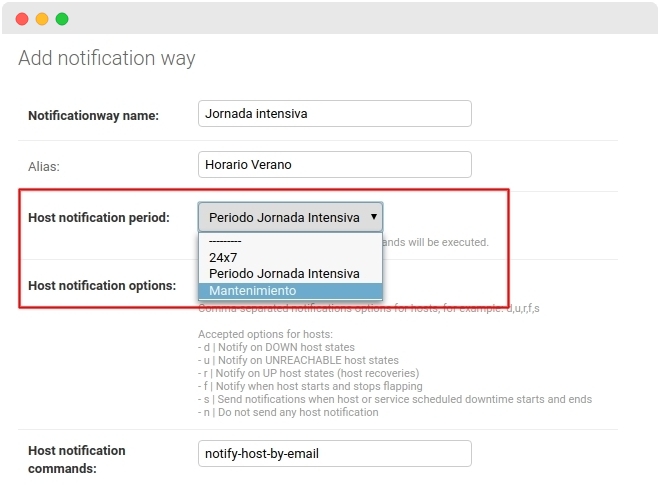
In short, this functionality allows the operator to exclude or “freeze” notification time slots, while still performing the relevant checks on the asset network. Minimising the noise of unnecessary notifications, for example, in maintenance tasks with scheduled stops and outages.
Note
Access the following use case: Notification Settings and learn in detail the process of configuring and scheduling Notification Periods.
6. New use case on scheduling notifications and checks in the WOCU User Manual
A new use case has been added to the User Manual, over the Notification Settings, from the Advanced Administration module of the Import-Tool.
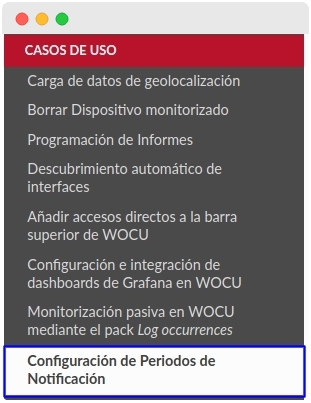
WOCU has a notification system that is fully configurable and adaptable to the needs of the operator. The operator will only receive important notifications and in the stipulated time slots.
The configuration process of the different elements that make up the programming of notifications on the results of operational checks or incidents is described in detail.
Note
More information can be found at: Notification Settings.
7. API optimisation
By using an intermediate cache between the Aggregator and the different Import-Tools, the queries related to the configuration of the same, made from the public API of the Aggregator, have been drastically optimised. Given that this improvement represents a significant architectural change, backward compatibility has been made available for those cases in which access to the designed cache is not available.
This means that every Import-Tool will save its configuration in a data backend every time WOCU-Check is executed. Thus, for any request, the Aggregator API will now query the appropriate backend directly, without having to traverse each of the associated Import-Tools.
To enable caching, the api_optimisation option must be checked within the Advanced Import-Tool Configuration and configured accordingly within the Advanced Aggregator Configuration and the relevant Import-Tools.

In short, this new integration has streamlined the communication process between the Aggregator and the different Import-Tools, a task that could sometimes be tedious.
8. Extension of fields in e-mail notifications
In addition to allowing system and network administrators to understand how their infrastructure is performing (whether in production or pre-production), WOCU helps to proactively detect problems in the network, alerting them before they occur and it is too late. In this latest version we have worked on this, in particular, we have expanded the information included in the alert notifications sent (via email) to the technical staff, adding new additional fields as help and guidance in solving performance problems.
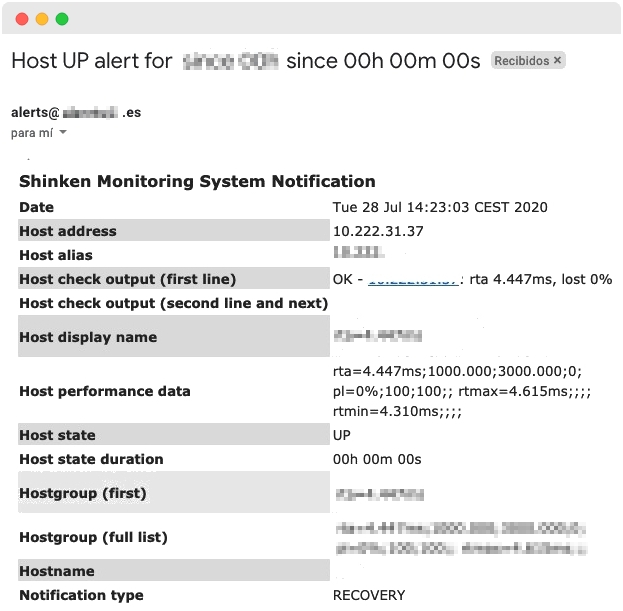
Bandwidth bottlenecks and transmission errors can mean a huge loss of business for companies when customers cannot access their services.
With the inclusion of these new fields, when an error occurs, the system will notify the affected team via email. The notification will include: which infrastructure group is being impacted, which Hosts (detailing names and aliases) are affected, and all metadata about the problem. In addition, the notification is broken down to the point of identifying the exact performance metric that is producing the error and the possible root cause of that problem.
The aim is to provide a greater level of detail on possible incidents that may affect the operation of the monitored infrastructure, allowing administrators to quickly resolve the incident and return to the desired situation.
9. New Host selector in the creation of Metrics Evolution Reports.
A new Host selector has been added in the creation of Metrics Evolution Reports.
In previous versions, it was only possible to run reports with all the Hosts of a Realm or with groups of them (Host Groups). Now, this new filter has been incorporated that allows refining and narrowing the configuration and scope of the new report, being able to select a single Host for which a set of data will be collected for each selected metric.
Remember that the Host selector can be affected by the previous selection of a Host Group, displaying only the Hosts that are members of that group.
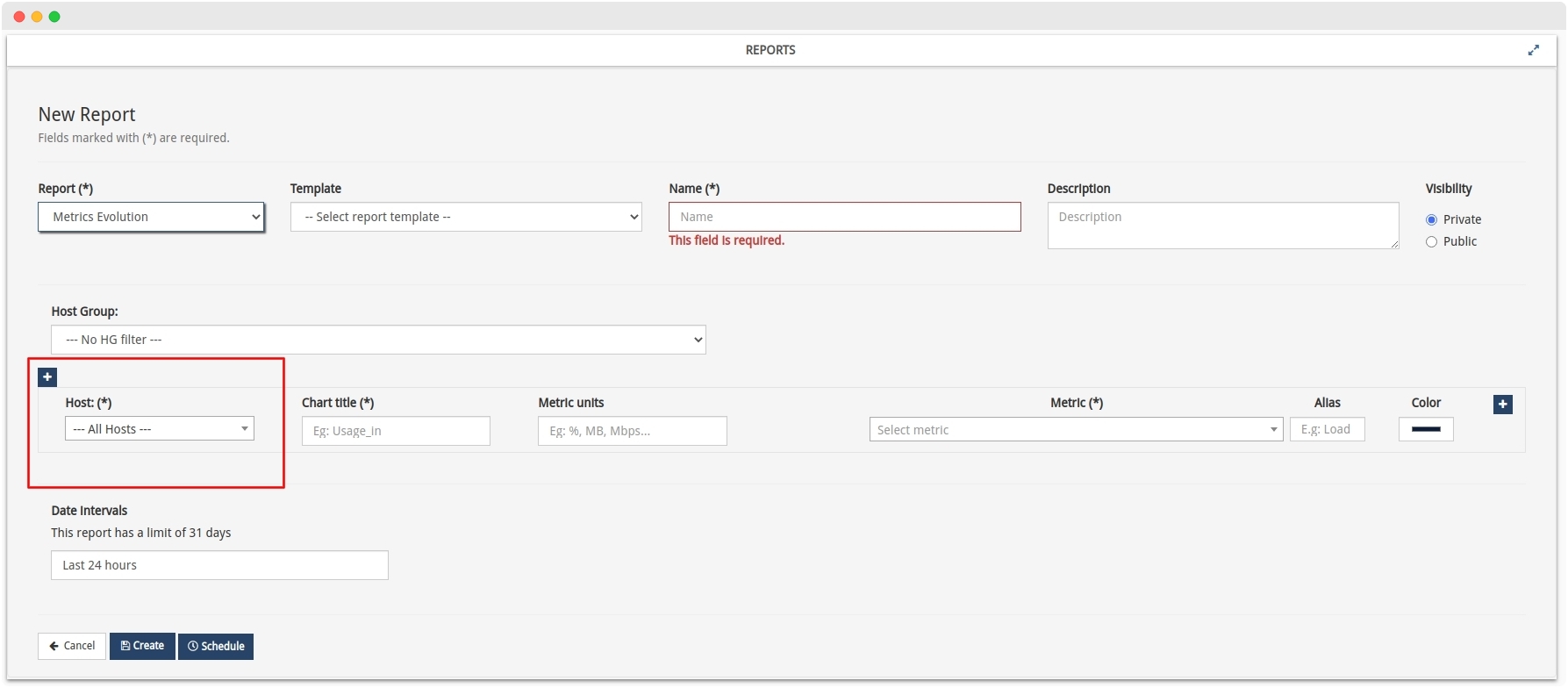
Note
More information can be found in the section: Configuration and generation of Metrics Evolution Report.
10. Migration of the Global Status Widget to REACT technology
The non-visible part of the widget Global of the Status view has been simplified by migrating it to REACT technology.
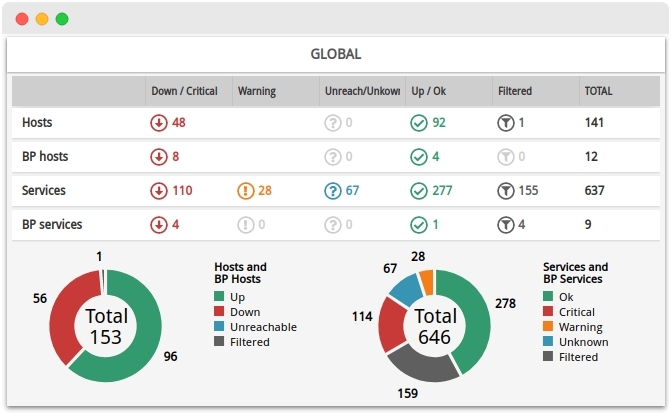
This change will result in better data visualisation, improved maintainability and responsive visualisation.
Other improvements and fixes
Every new version of WOCU is full of small changes, fixes and optimisations that should be briefly highlighted. We list the most notable ones in this version:
Updated support for RedHat and CentOS distributions.
Fixed a bug that allowed inconsistent time periods to be defined.
Fixed a bug when creating or editing Tasks, where a login prompt was displayed, even though you were already logged in.
Fixed a bug when relating the Events of type UP with its corresponding DOWN in the KPI’s.
Fixed a migration related to the
UI_ACLextra app.Different scripts have been created to massively discover, with a single execution, the macros:
_DEVICEVENDOR,_IFACESand_IFACES_HEALTHof all the Hosts in a Realm.Fixed a Import-Tool menu clutter bug when reducing or minimising the window and adjusting the width of the main table.
Auto-completion of login forms has been removed, both in the main page tool access page, and in the Advanced Configuration module access pages of the Aggregator and Import-Tool.
Fixed the behaviour and adjusted the layout of the
Include Soft Changesbutton in the Events section.The graphical presentation of Reports has been improved, adapting the scale to maximum and minimum values, for a clear visualisation of the evolution of the metric data.
Fixed the Assets inventory Bulk Actions selector to be enabled only when there are selected items.
Added support for
SSL certificatesin metrics models, for backend connections to the InfluxDB database.Some aesthetic adjustments have been made to the loading view of the Hosts modal, setting a minimum height for the set of widgets that make it up and relocating the loading spinners to make the view more consistent. A Services Status popup message that sometimes interfered with the reading of the legend has also been relocated.
Within the internal configuration of Monitoring Packs, a drop-down menu (with options) on certain complex macros has been added to already configured items. Previously, such a selector was only enabled on new or newly discovered items.
The use_aggressive_host_checking option of the monitoring engine has been enabled by default, as it has been found to improve reliability in the generation of recovery states (important for the computation of Availability Reports).
Upgraded software
Numerous pieces of software integrated in WOCU have been incorporated and updated:
Software |
Previous version |
Current version |
Remarks |
|---|---|---|---|
RabbitMQ |
2.7.1 |
3.3.4 |
Support for new versions of Celery |
LMD |
1.8.3-13 |
1.8.3-33 |
Troubleshooting |
Outlet |
10.19.0 |
10.21.0 |
v10 LTS series update |